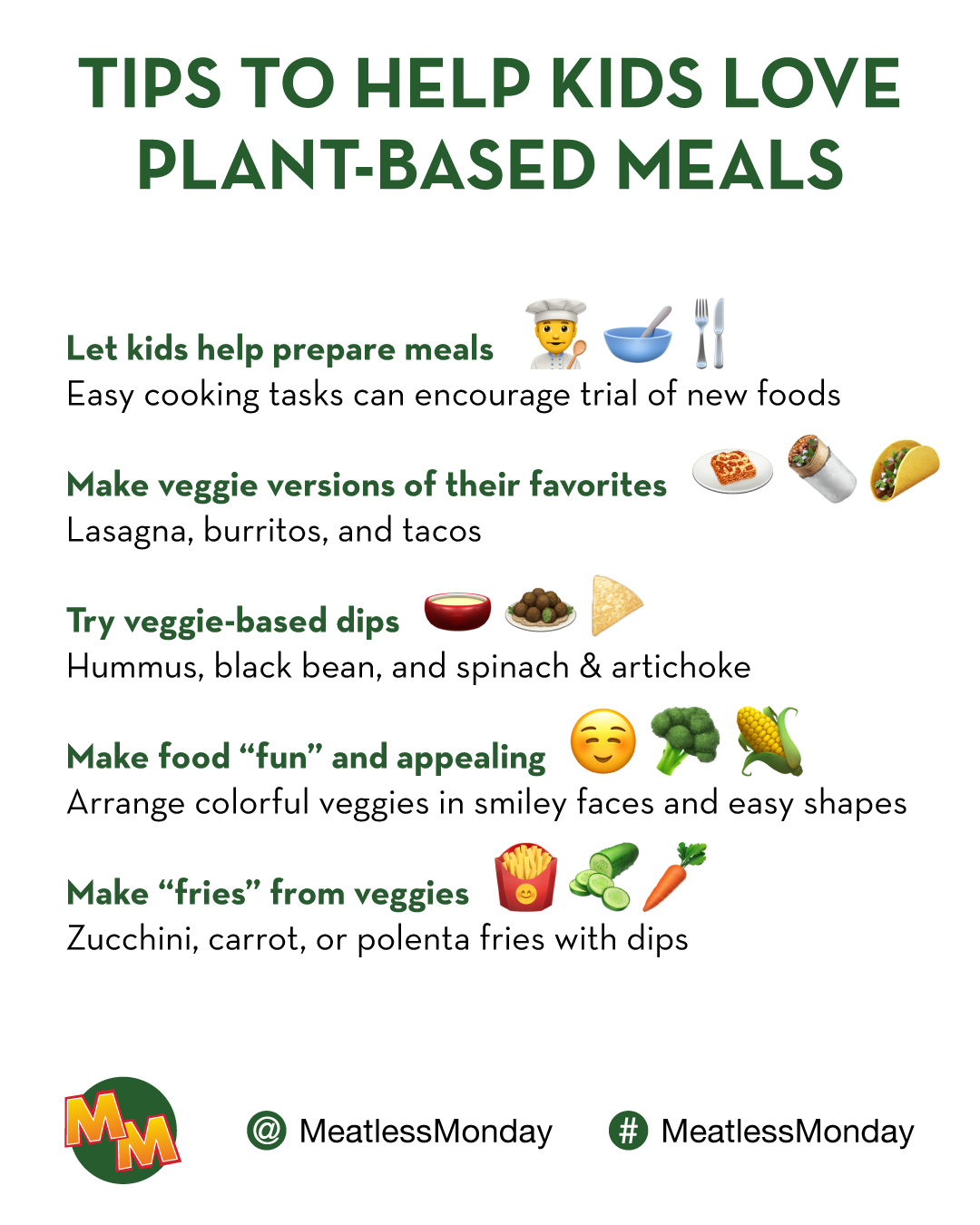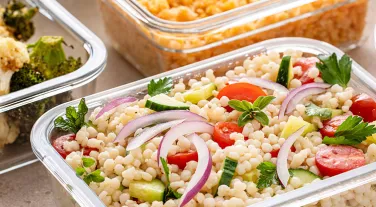Preparing meals at home is one of the most effective ways to ensure a table full of nutritious foods, but it’s also an opportunity to include the whole family in the cooking process. Regardless of age, when kids are involved in shopping, planning, prepping, or assembling their meals, thery have a greater interest in the food being served and an, increased likelihood to experiment with unfamiliar dishes or ingredients. Use Meatless Monday as a day to make dinner a family affair.
5 ways to encourage more plant-based eating in the household
Have kids help in the kitchen
Kids of all ages can get involved in the cooking process. Give children ages 3 to 5 tasks like rolling dough, squeezing lemons, massaging kale, tearing herbs, and stirring. Kids who are a couple years older can do more advanced tasks, like measuring spices and liquids, peeling vegetables, and scooping avocados. If you are confident in a child’s or teenager’s ability, give them more responsibility, like chopping, grating, opening cans, and assembling cold salads and dressings.
Make familiar foods
Lentil tacos, sweet potato mash, butternut squash macaroni and cheese, vegetarian chili, and Buffalo cauliflower are just a few plant-based dishes which taste like meals that kids love. Even topping a pizza with broccoli or adding a few extra vegetables to a pasta dinner can help entice kids to eat their veggies.
Incorporate fun flavors
A platter of roasted carrots, potatoes, or broccoli may not excite a young palate, but when these foods are paired with interesting sauces and condiments, like hummus, barbecue sauce, or ketchup, there’s a better chance that kids will give them a try.
Meal plan together
Making a weekly menu is a great way to organize shopping trips and prepare meals in advance, but it’s also an opportunity to involve all members of the family. Together, brainstorm healthier versions of your favorite foods and see how new flavors or ingredients can be introduced. When kids are involved in planning, shopping, and preparing, they are often more willing to try and enjoy new foods.
Stock healthy snacks
Kids (and adults) will eat whatever is available to them. Fill the pantry and cabinets with snacks that are less processed and more nutritionally complex, like nuts, fresh and dried fruits, granola, whole-grain cereals and chips, seaweed snacks, and roasted chickpeas. Healthy dips are another great option. Try keeping some hummus, guacamole, or black bean dip in the refrigerator for a quick way to satisfy grumbling tummies.






